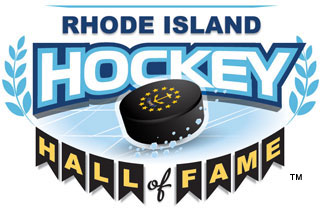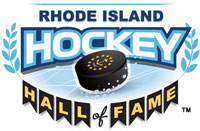We know that Brown defeated Harvard 6-0 in the very first organized intercollegiate ice hockey game played in the United States on January 19, 1898. Brown went on to enjoy more success in those early years against collegiate teams from Yale, Harvard, Columbia, the University of Pennsylvania, and club squads such as the Skating Club of Brooklyn and the New York Athletic Club. But success was short lived. The team lost sixteen straight games from 1904 to 1906, dooming its fortunes. Alas, hockey at Brown was discontinued and was dormant for the next twenty years.
A report of the renewal of hockey at the University in the Boston American in January 1923, which announced a new Brown team with Quentin Reynolds, class of ’24, as coach, was only a rumor.
In 1925, the Rhode Island Auditorium, the state’s first indoor artificial ice rink, was built on North Main Street in Providence. It sparking a renewed interest in hockey as the Rhode Island Reds were formed and competed in the Canadian-American (Can-Am) Hockey League. It was hockey played at the highest level.
Brown students organized class teams, which played an intramural schedule in the new arena. A consolidated team regained official recognition from the University in 1926, when James H. Gardner, the coach of the Reds, was hired to coach the new Brown team, as well. (Can you imagine the coach of a professional team also coaching a college or high school team in the same season today? Brown would be the beneficiary of this practice for years to come.)
That 1926-27 team lost its first two games, but ended the season with a 4-4 record. Jean Dubuc, a former major league baseball pitcher and then general manager of the Reds, coached from 1927 through 1929. He was followed by Tom Taylor, who later became the college’s Athletic Director.
Tom’s brother, Bobby, another Reds player, coached for two years before Tom took over helm again in 1933. He was behind the bench two years later when Harvard defeated the Bears, 3-0, despite the legendary 76-save performance by Brown netminder Jack Skillings.
Art Lesieur, one of the Reds’ all-time defensive greats, supplemented his playing income during the 1938-39 season by coaching the Brown six. The next year, for a second time, hockey was discontinued again at Brown, this time for financial reasons.
During the war years that ensued, informal hockey at the University was kept alive by students. Like a good bartender, a good barber is a good listener. While trimming flat tops, rah-rahs, and the practical parted hairstyles of the 40’s, Frank Mazzeo, the tonsorial artist on the Bears’ campus, found himself listening to the constant lament of the hockey players who frequented his barber chair and had no outlet for their talents. Unlike the good barkeep or barber who simply nods his head as the talker talks, Frank took action and walked the walk.
In 1946, Mazzeo organized and coached an informal team of student hockey players. Having been denied the use of the college name, the squad chose and played under the name of “Providence Clippers”, a tribute to their champion.
An outdoor rink, the gift of the Providence Brown Club, was built just north of Marvel Gymnasium and used for practice and games. The Clippers were good and they played all comers, sometimes with no outside eyes on the game and other times in front of cheering students. The University took notice.
One year later, in 1947, hockey once again became an officially recognized sport at Brown with Westcott Moulton ‘31, Brown’s first All-American, as coach. In its first official season since 1939, the team won five of its thirteen games in the Pentagonal League.
Remarkably, it would take only four more campaigns for Brown to reach the NCAA championships in Colorado Springs, defeating defending champion Colorado and then losing to Michigan in the finals. The rest is a proud and uninterrupted history.
Senior goaltender, Don Whiston, MVP of the tournament and an All-American and Olympic star, would take over the reigns of the team in 1952. He would be succeeded by the team’s first full-time coach, USA Hall of Famer and one of the game’s great innovators, Jim Fullerton.
Fullerton began his illustrious 15-year career behind the Bears’ bench in 1955, one year before games would be competed under the new and official “Ivy League” designation. Along the way, he would garner 5 Coach of the Year awards and guide his team to a NCAA Final Four appearance on the Bears’ home ice at Meehan Auditorium in 1965.
Today, Brown’s winning tradition continues under the tutelage of East Providence native and former Mount St. Charles All-Stater, Brendan Whittet. He is the 4th Brown alum, along with Moulton, Whiston, and Cranston’s Allan Soares (1970-74), to pilot the team.
He is also the 15th “official” coach in the history of the Brown’s men’s hockey program, which may in fact owe it very existence today to the University’s most famous “unofficial” coach and team – the barber, Frank Mazzeo, and his Providence Clippers.
Posted by RIHHOF

